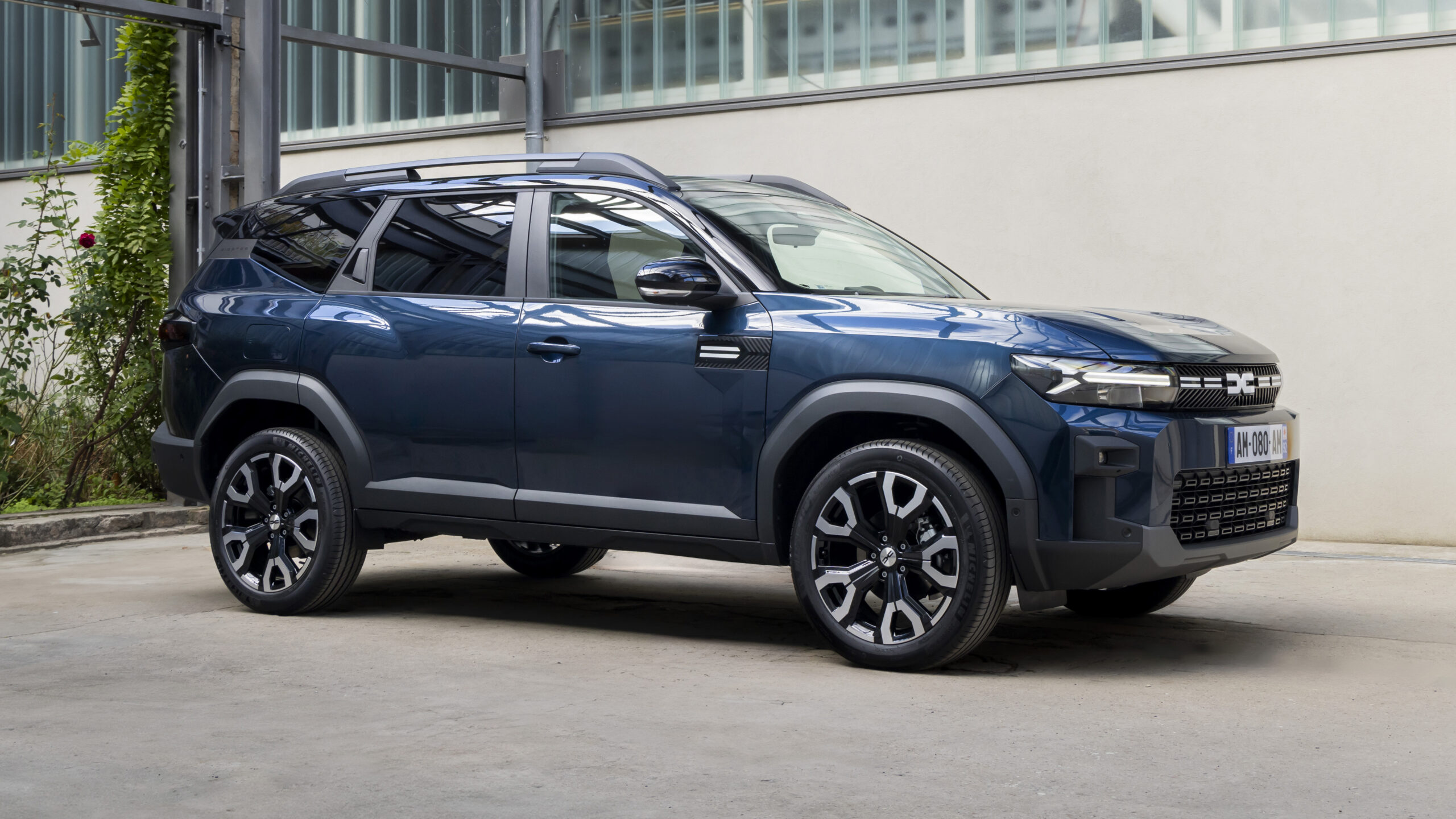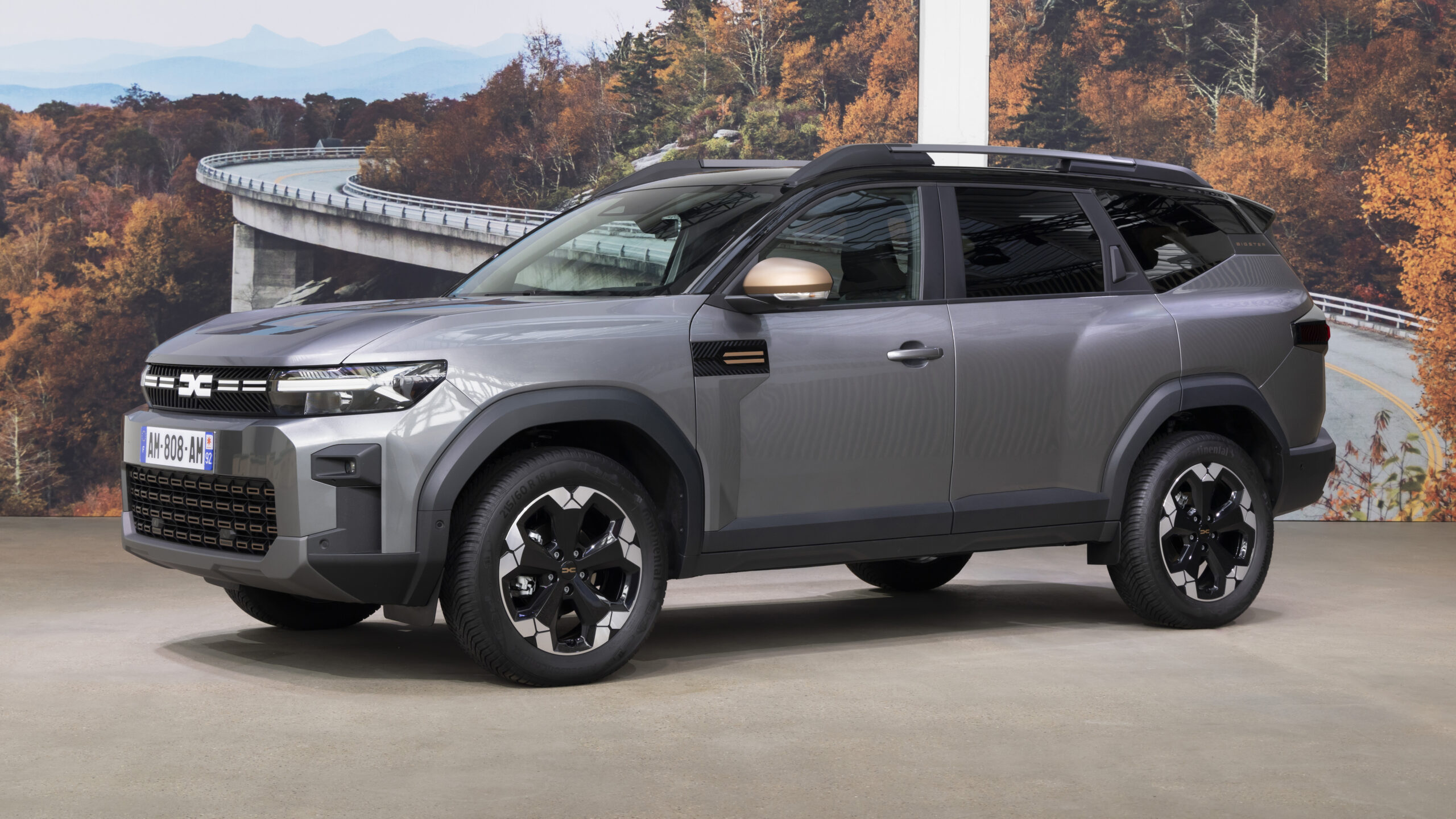- The all-new Bigster is Dacia’s largest and most powerful model to date.
- It looks similar to the Duster, but offers more space and features inside the cabin.
- The compact SUV is available with LPG, mild-hybrid, and hybrid powertrains.
Dacia has unveiled the all-new Bigster, its largest model to date, marking its entry into the compact SUV segment. Essentially a stretched version of the hugely popular Duster, the Bigster retains the same rugged aesthetic but offers more space and features, signaling an evolution for the brand.
The Bigster measures 4.57 m (179.9 inches) in length, 1.81 m (71.3 inches) in width, and 1.71 m (67.3 inches) in height—making it about 230 mm (9 inches) longer than the Duster, though it shares the same width.
2024 Dacia Duster Review: Is It Still The King Of Budget SUVs?
The styling of these mechanically related SUVs is quite similar, but the Bigster benefits from a redesigned front bumper, an extended wheelbase, and a longer rear overhang. Look closer, and you’ll notice subtle tweaks to the side gills, windows, and tailgate as well.
Inside, the dashboard is carried over from the Duster, contributing to Dacia’s cost-cutting policy. However, it steps up with more tech and safety features. A 10.1-inch infotainment display comes standard across all trims, while the digital instrument cluster is available in 7-inch and 10-inch options.
DACIA BIGSTER HYBRID 155
The Extreme trim stands out with its panoramic sunroof, Arkamys 3D Sound system, built-in navigation, and wireless charging. Meanwhile, the Journey trim adds an electric tailgate and adaptive cruise control—marking a first for Dacia.
Spacious Interior and Cargo Room
Another important difference between the Bigster and the Duster is the available space for passengers and their luggage. The Bigster offers more legroom for the second-row seats, and a massive boot with a capacity 667 lt (23.6 cubic feet). There’s no word yet on a seven-seater variant, so for now, it remains a five-seater SUV.
More: Converting The Dacia Jogger Into A Budget Four-Seater Limo
Other improvements in the Bigster include an acoustic windscreen, thicker glazing, better sound insulation for the engine, a new carpet, touch-sensitive LEDs, passenger lumbar adjustment, and a dual-zone A/C with rear vents.
YouClip and Adventure Accessories
The SUV is equipped with Dacia’s YouClip system for mounting accessories in different parts of the cabin. Practicality can be further improved with an optional second-row armrests that doubles as a backpack, a storage organizer for the seatbacks, and a cargo box that mounts on the two bar. As expected, the Bigster is available with Dacia’s camping-friendly accessories including the Sleep Pack, Roof Rack, and Tent.
LPG, Mild-Hybrid And Hybrid Powertrain Options
As with Dacia’s entire ICE-powered model range, the Bigster rides on the CMF-B architecture sourced from the Renault Group. The powertrain lineup comprises mild-hybrid ECO-G (gas/LPG), mild-hybrid gasoline, and self-charging hybrid setups.
It’s also the first Renault Group vehicle to feature the new Hybrid 155 powertrain, pairing a four-cylinder engine with two electric motors, a 1.4 kWh battery, and a clutch-less automatic gearbox. The combined 153 hp (114 kW / 155 PS) makes it Dacia’s most powerful model ever. According to the company, the Bigster Hybrid 155 can drive in full-electric mode up to 80% of the time in urban areas, improving efficiency by 6% over the Hybrid 140, available on the Duster and Jogger.
Other options include the TCe 140, featuring a mild-hybrid 1.2-liter turbocharged three-cylinder engine with 138 hp (103 kW / 140 PS) and a 0.8 kWh battery. This engine is mated to a six-speed manual transmission, sending power to the front wheels.
DACIA BIGSTER TCe 130 4×4
Dacia might have discontinued diesels but it still offers powertrains that can run on both gasoline and LPG. The Bigster ECO-G 140 is the first to add LPG capability to a mild-hybrid setup, producing the same 138 hp (103 kW / 140 PS). When the 50-lt gasoline tank and 49-lt LPG tank are full, the Bigster ECO-G 140 can travel up to 1,450 km (901 miles) between refuelling stops.
Lastly, the only all-wheel-drive variant is the Bigster TCe 130 4×4, featuring a slightly detuned version of the mild-hybrid 1.2-liter engine with 128 hp (96 kW / 130 PS). This model is equipped with a six-speed manual and Dacia’s Terrain Control 4×4 system, offering five drive modes: Auto, Snow, Mud/Sand, Off-Road, and Eco.
Dacia hasn’t provided specifics on the Bigster’s market launch, but it’s expected to hit Europe and the UK in the coming months. Although the Bigster will likely be Dacia’s priciest model, it will still undercut most rivals in the compact SUV segment, staying true to the brand’s budget-friendly identity.


























































































































































